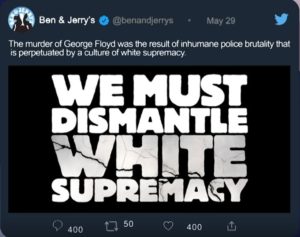The standard way of thinking about diversity has it that ethnicity, gender, and race are the predominant merits companies need to consider at the workplace. Where they often fall short, however, is in fully realizing the impact language diversity has amongst its employees. From the Journal of Applied Behavioral Science, researchers Regina Kim, Loriann Roberson, Marcello Russo, and Paolo Briganti stress why global leaders and managers should embrace multilingual backgrounds more as a way to leverage diversity in our increasingly globalized society. Their article “Language Diversity, Non-native Accents, and Their Consequences at the Workplace” addresses the type of challenges native and nonnative speakers face, how a lack of linguistic diversity can negatively affect intraorganizational dynamics, and why it has been overlooked these past few decades.
Many studies in the past have shown how one speaks, being a leading social force in communication, can stigmatize those especially with nonnative accents and in turn create negative perceptions of the speaker. While Kim et al attest to this past research, they point out that it often only ever examined how nonnative speakers are or were evaluated from the perspective of native speakers. As a result, Kim et al study look at giving more attention to understanding the cognitive and emotional experiences between both native and nonnative speakers in an organizational workplace setting. Their research design and data collection approach involved inquiring 99 respondents’ experiences through in-depth semi-structured interviews and open-ended survey question formats.
The study’s strength lays in its inclusive ability to hear from all ends of the spectrum. It allows the reader to empathize with the point of view from many others and at a greater personable scale because of the various detailed, first-hand accounts given. From both parties, they found that language diversity resulted in two challenges at work which included the real difficulty of communicating amongst varying levels of a speaker’s fluency, and the perceived difficulty in communicating that cues one to assess a speaker’s competency, regardless of their actual competence.
Since language and communication ultimately pervade every facet of organization life, having different linguistic backgrounds will inevitably present challenges between employees. Cognitive scientist and professor at UCSD, Lera Boroditsky, expands this horizon of thinking in a TED Talk she delivered explaining how linguistic diversity reveals just how ingenious and flexible the human mind is. Giving cultural, mathematical, and everyday case by case scenarios, she highlights how language can influence and have big effects on how we perceive even the most basic perceptual decisions such as color. She connects these ideas to bigger implications within our daily lives giving examples of how speakers from varying backgrounds can process ideas and remember eyewitness events differently. Applying this to our topic of diversity and inclusion, the greatest takeaway we can note is how different language abled people can think or conceptualize events not seen by another individual, group, or organization in a workplace setting. Failure in recognizing the value this brings can create obstacles in creating an inclusive environment that performs at its best. Worse yet, Kim et al argue that it can create subtle forms of discrimination, the undervaluation of foreign employees, and fewer opportunities in careers for nonnative speakers.
Towards the end of the article the authors openly discuss the importance this sort of diversity has in the workplace. Here it becomes evident that the data this publication presents is consistent with many of the readings we’ve had including Gundemir et al take on the impact of minority employees’ self-perception at the workplace and Kaplan and Donovan’s call for a better level of systems framework. Similarly, they address how language diversity can serve as source of competitive advantage like Austin and Pisano go on to describe with neurodiverse populations. By accommodating a space both native and nonnative speakers feel safe to express fears, concerns, and emotions, encouraging openness and inclusion will become the set norm. The bigger picture of their argument, I find here, aims to expand who/ what we consider when discussing diversity at a deeper level.
While documented research has shown organizational culture playing an important role in promoting diversity (Shore et al 2009), Kim et al extend this conversation addressing that language diversity continues being overlooked despite its ability to elicit more forms of discrimination at work compared with other diversity attributes. In publishing their research, they are bridging a gap in diversity and literature that has glossed over the role language plays in our conscious and unconscious actions. They provide concrete reasons as to why these issues are critical to address and the potential it has to improve organizational performance and therefore, benefit everyone in the organization. At its cores these discussions make us pause to reflect on the organizational systems and persistent inequalities we have ongoing today.
Scholarly Article:
Media Artifact: A better understanding of how language shapes the way we think and the impacts it has on the culture, society, and organizations we create.




